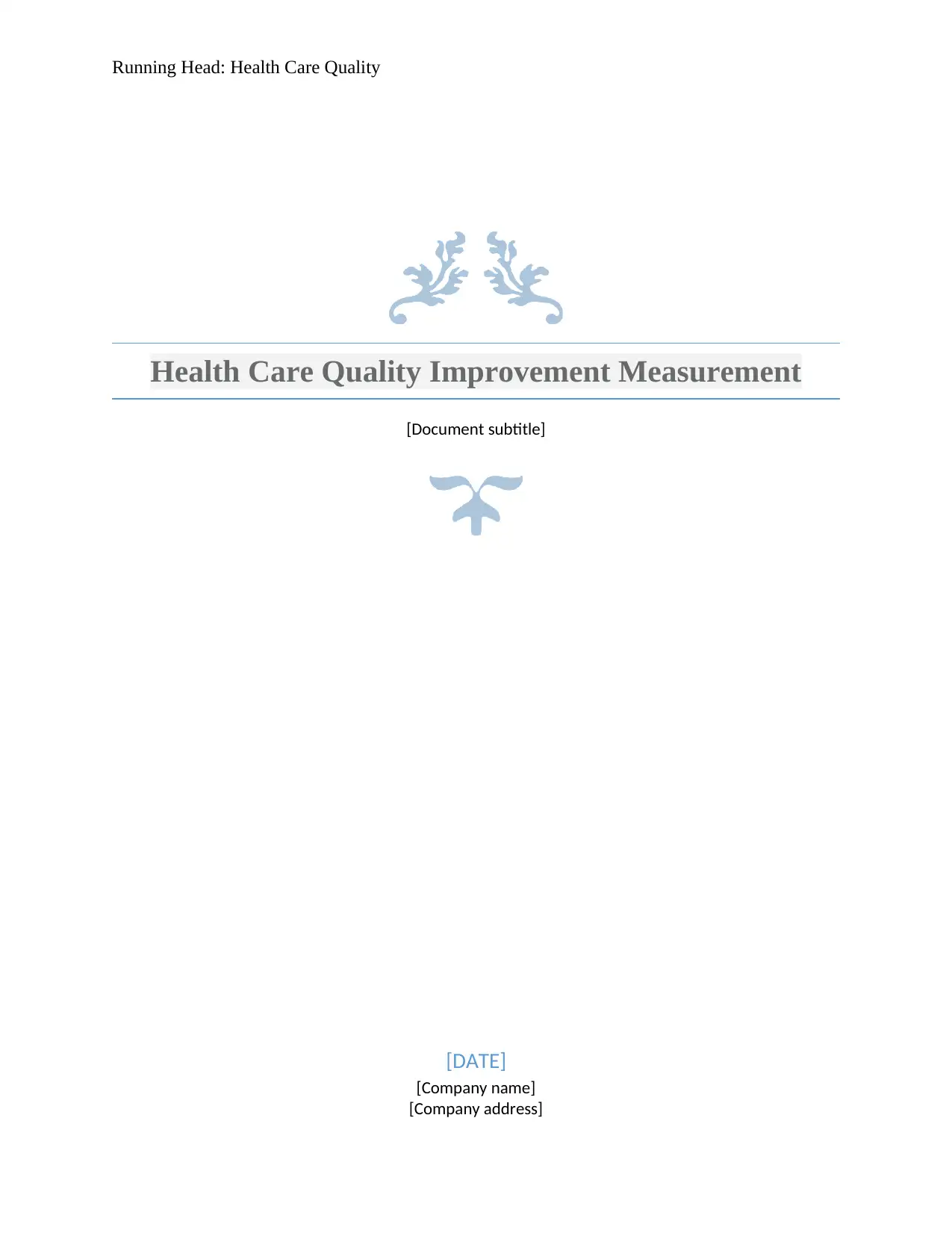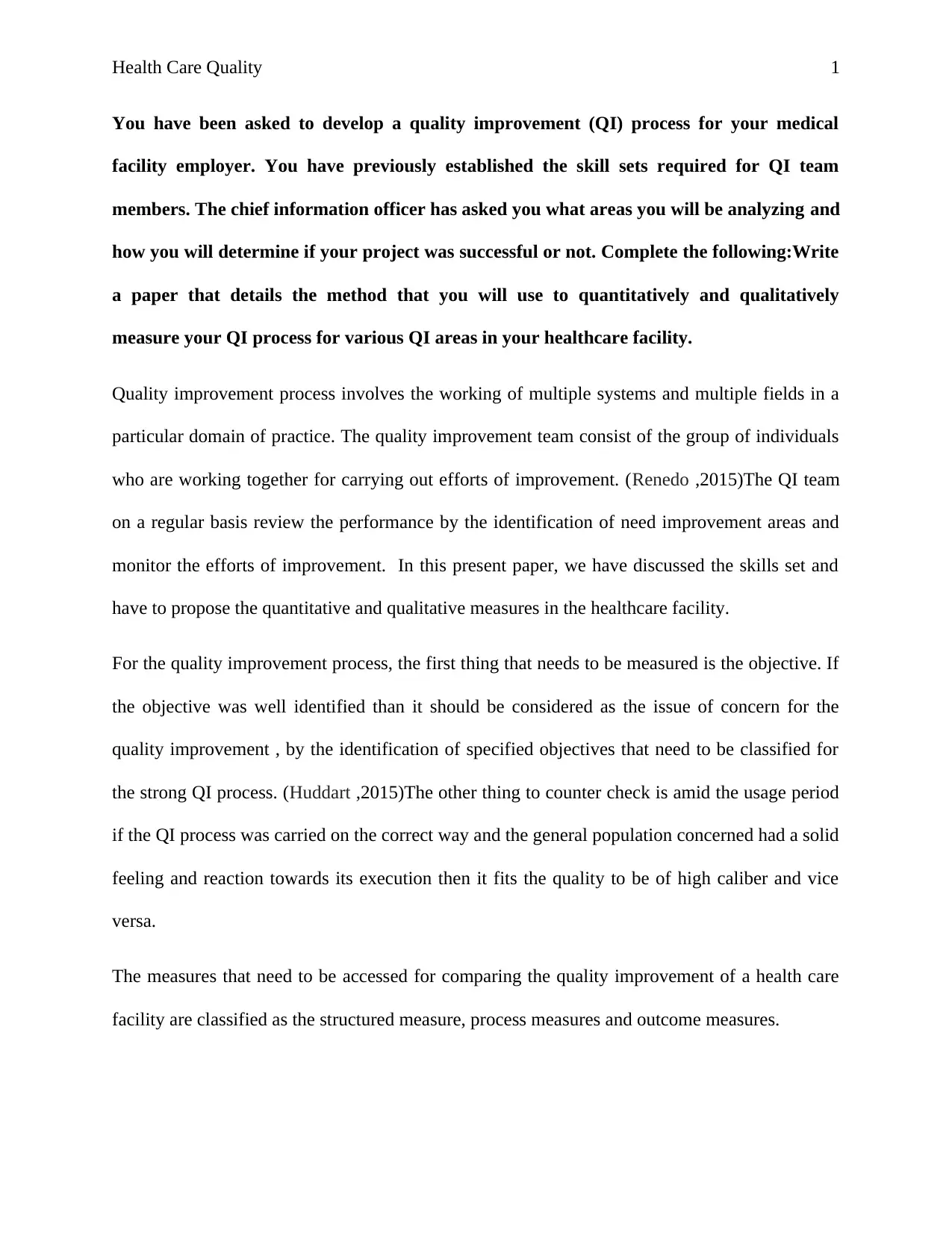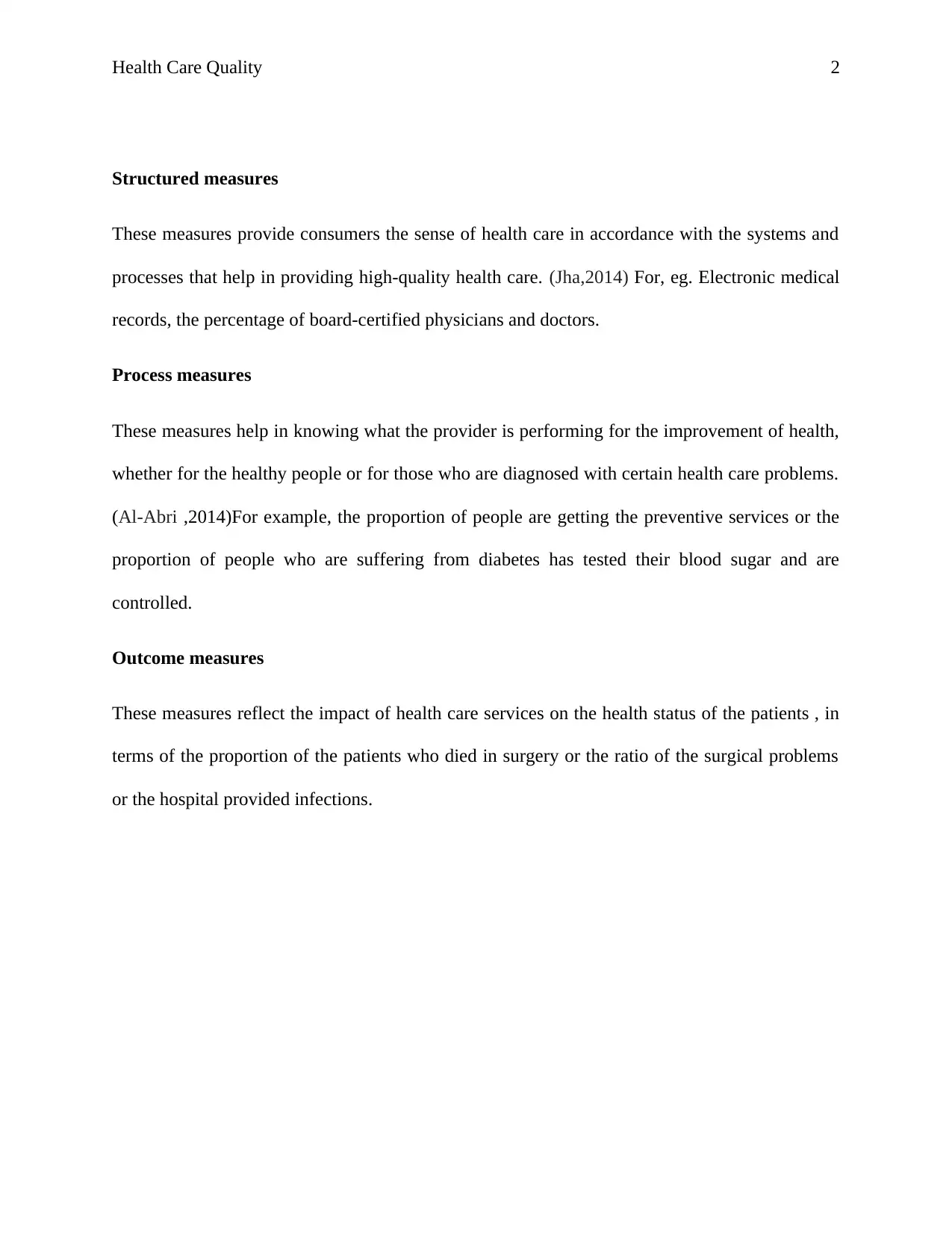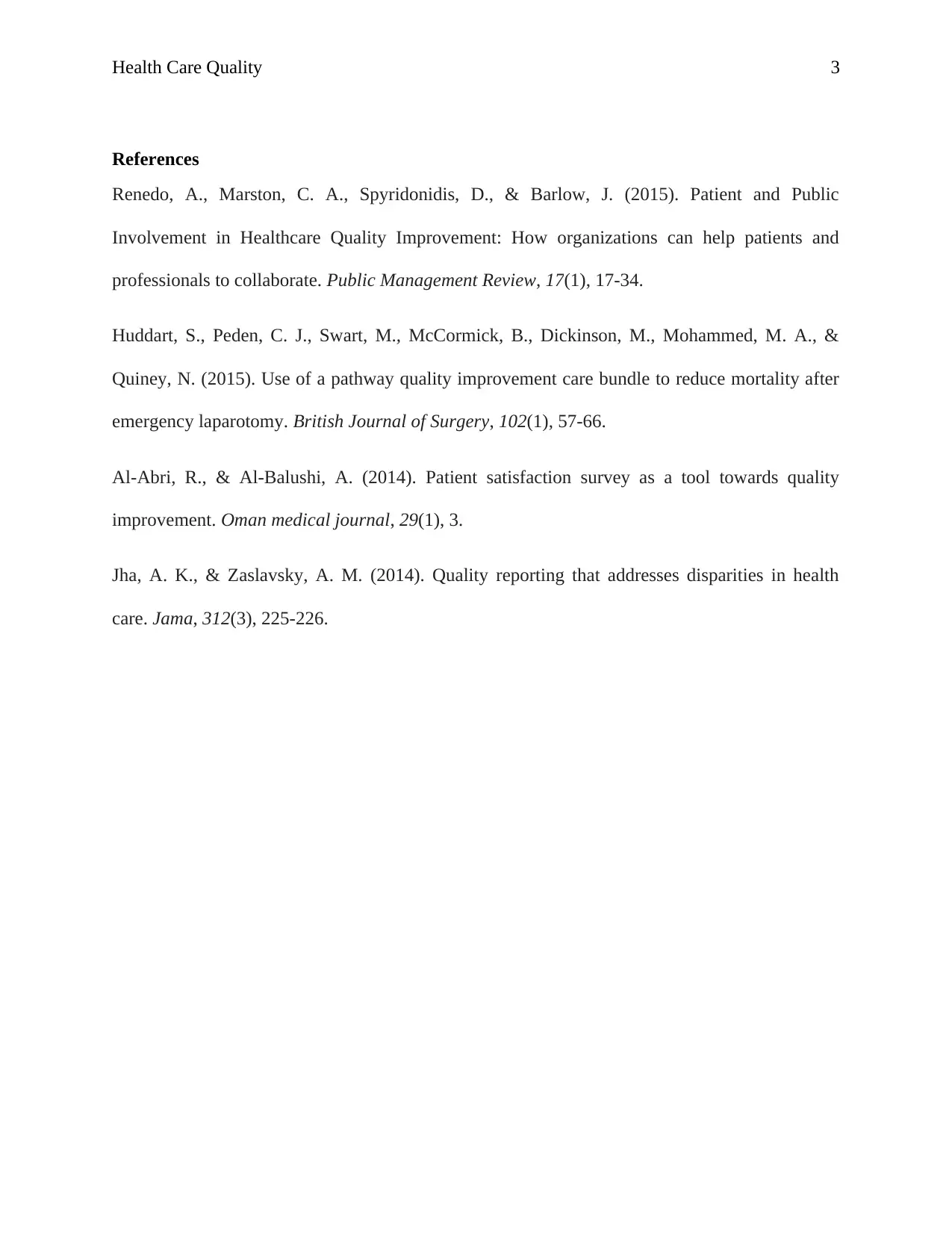Quantitative and Qualitative Measurement for QI in Healthcare
VerifiedAdded on 2019/09/20
|4
|702
|77
Report
AI Summary
This report outlines a quality improvement (QI) process for a medical facility. It addresses the chief information officer's request by detailing methods for quantitatively and qualitatively measuring QI across various areas. The report emphasizes the importance of identifying clear objectives and assessing the impact of QI initiatives. It categorizes measures into structured measures (e.g., electronic medical records), process measures (e.g., preventive services), and outcome measures (e.g., patient mortality). The report emphasizes the role of the QI team in regularly reviewing performance and identifies key factors for a successful QI process, including the active participation of relevant stakeholders and the alignment of the process with the needs of the general population served by the healthcare facility. The report references key studies to support the methods discussed.
1 out of 4











![[object Object]](/_next/static/media/star-bottom.7253800d.svg)